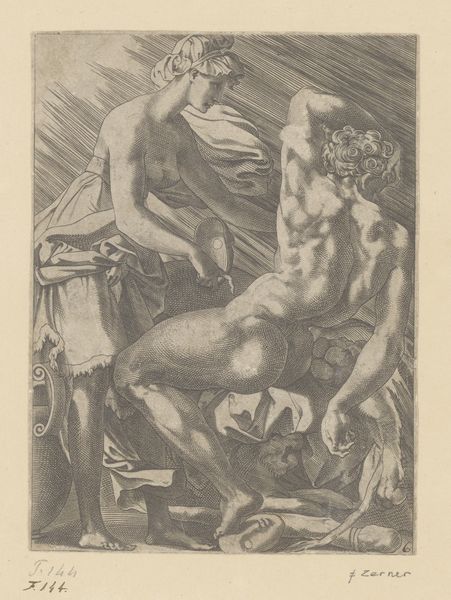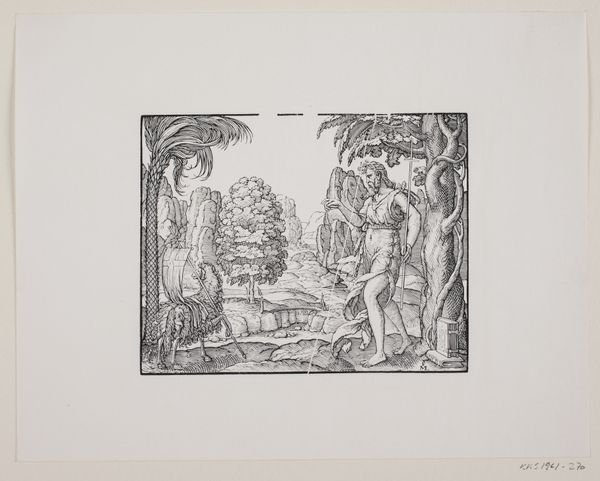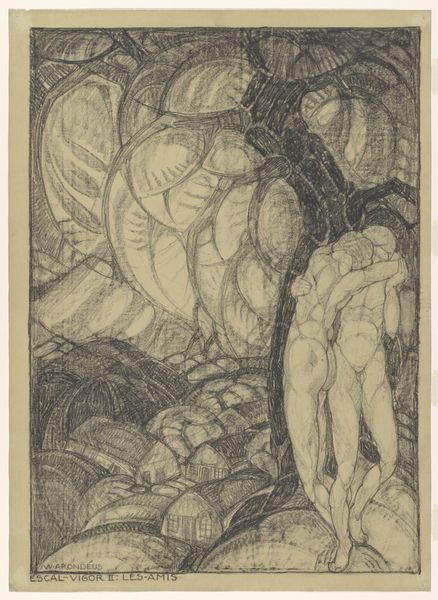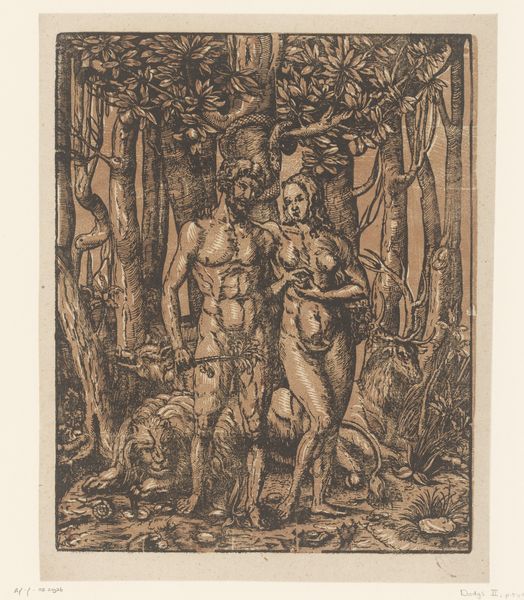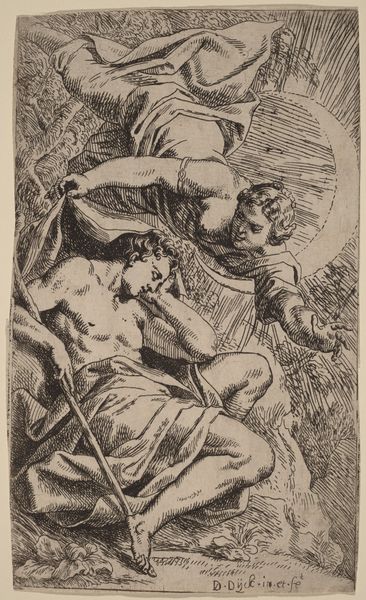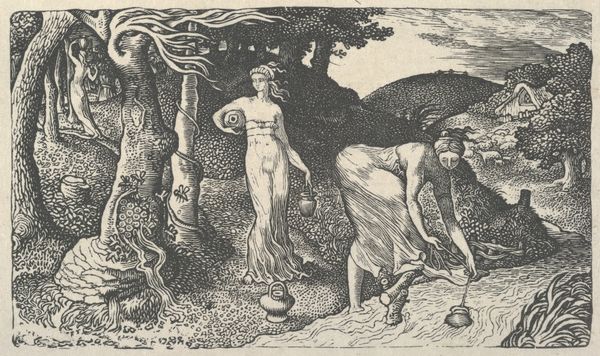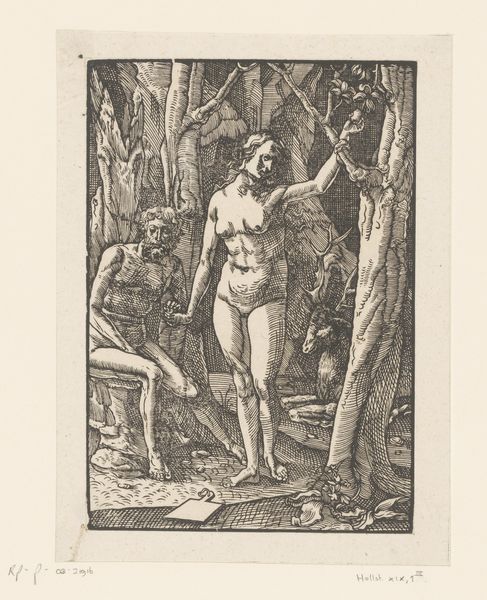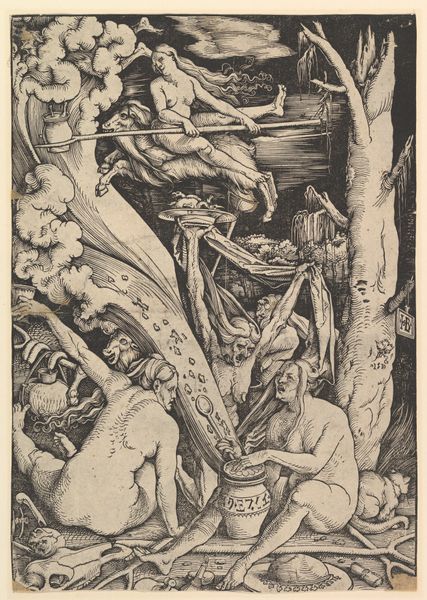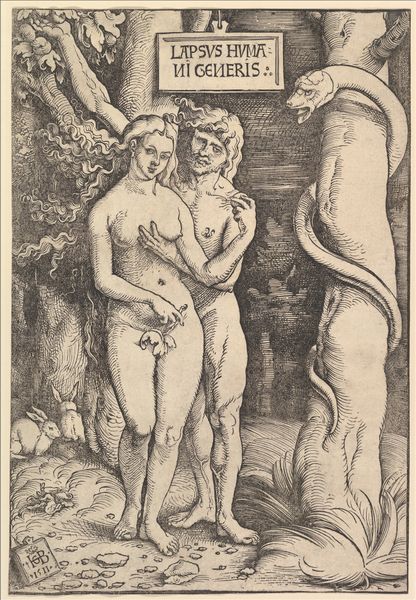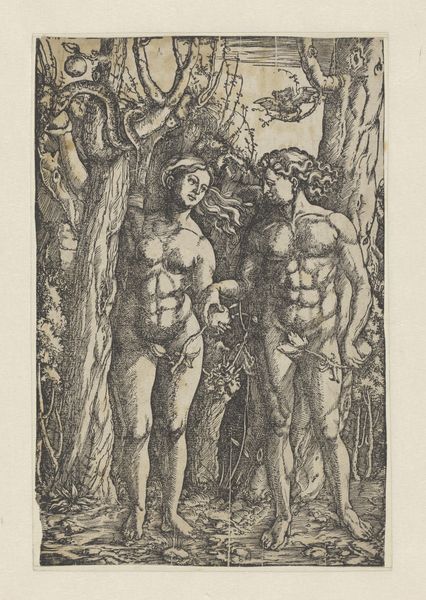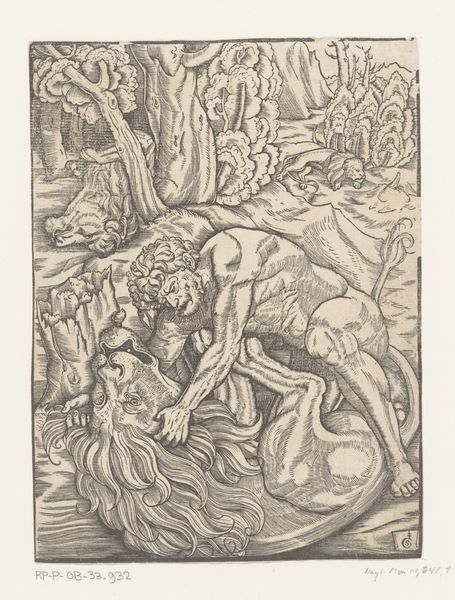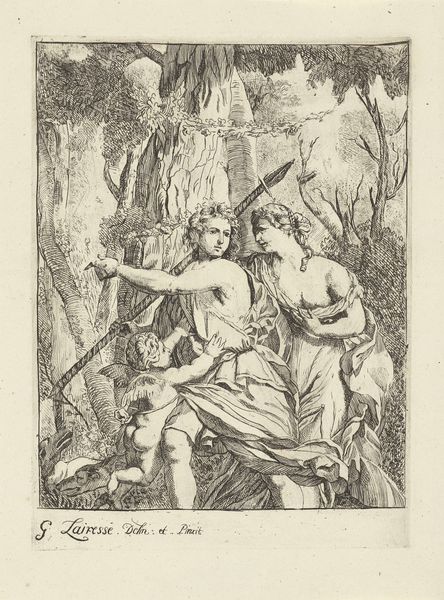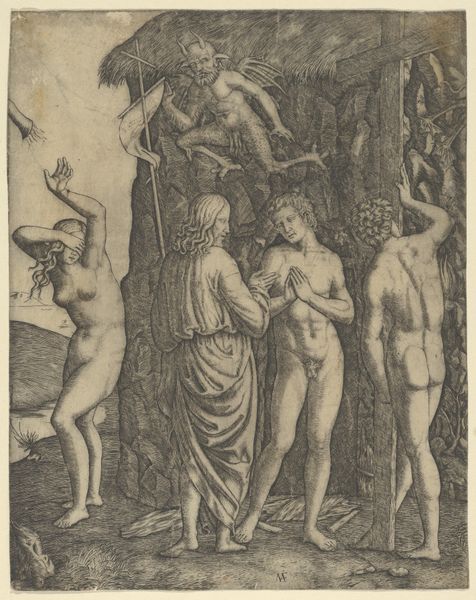
Adam and Eve (Labour: Whan Adam Delved and Eve Span, Who Was Then the Gentleman?) 1895
0:00
0:00
drawing, print, ink, pen
#
tree
#
drawing
#
fairy-painting
#
ink drawing
#
pen drawing
# print
#
pen illustration
#
pen sketch
#
landscape
#
figuration
#
ink
#
symbolism
#
pen
Dimensions: Image: 13 1/4 × 11 3/8 in. (33.7 × 28.9 cm) Sheet: 21 3/8 × 16 3/4 in. (54.3 × 42.5 cm) Frame: 24 x 18 in. (61 x 45.7 cm)
Copyright: Public Domain
Editor: Immediately, the intricacy of the line work strikes me. The entire composition feels weighty with the manual labor suggested. Curator: Indeed. We're looking at Edward Burne-Jones's 1895 pen and ink drawing, “Adam and Eve.” It is held at the Metropolitan Museum of Art. He subitled it: "Labour: Whan Adam Delved and Eve Span, Who Was Then the Gentleman?". The image illustrates Adam toiling with a primitive shovel, and Eve holding a distaff, their children beside them. Editor: The rough tools tell their own story about their place in the world post-expulsion. Consider the starkness of that shovel—crude, almost brutal in its simplicity. It’s raw labor, right there, distilled into this object. Curator: Precisely. And this rawness extends to their figuration as well. Note the pre-Raphaelite emphasis on form, evident in their musculature and the delicate fall of drapery, sharply contrasting with their crude surrounding. Burne-Jones skillfully positions them between idealized forms and laborers. Editor: Absolutely. I read their figures almost as classical statues transposed onto a scene of pure physical effort. The material reality of their existence, scratching a living from the earth. The distaff Eve holds contrasts oddly with Adam's physical engagement with the soil; each implements labor. Curator: The formal elements work to create that very tension, I think. Consider the use of black and white. The tonal range isn’t just representational; it's deeply symbolic, emphasizing the stark choices and harsh realities of their post-Edenic existence. Editor: It definitely directs the eye—forces us to confront these immediate facts of their working life, and beyond the theological narratives this invites us to see labor, in it's creation of value. The sheer detail, too, speaks to time and commitment. How much labor did Burne-Jones commit when crafting this image? Curator: Quite a bit. But thinking on its pictorial effect, it offers an almost dreamlike clarity to the weight of their responsibilities. The forms interlock and resonate with clear intent. Editor: The detail certainly enriches the picture—personally, it allows for greater sensitivity when exploring notions of labor and materiality and that feels both necessary and thought-provoking. Curator: A potent reminder that visuality gives rise to unique perspectives that complement thematic frameworks.
Comments
No comments
Be the first to comment and join the conversation on the ultimate creative platform.
